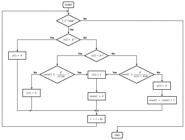AbstractIntroduction: Since it was introduced in 2012, the Neuroid has been used to aid in understanding how functionally different neural populations contribute to sensory information processing. However, insights about whether this neuron-model could perform better than others or about when its utilization should be considered have not been provided yet.
Methods
In an attempt to address this issue, a comparison between the Neuroid and the leaky-integrate-and-fire (LIF) model in terms of accuracy and computational cost was performed. Both models were tested for different stimulation amplitudes and stimulation periods, with time step sizes ranging from 10-4 to 1 ms.
Results
It was found that, although the Neuroid was able to produce more accurate results than its original version, its accuracy was lower than the achieved with the LIF model solved by the forward Euler method. On the other hand, the Neuroid performed its calculations in an amount of time significantly lower (Mulfactorial ANOVA test, p < 0.05) than that required by the LIF model when it was solved by using the forward Euler method. Moreover, it was possible to use Neuroid-based networks to replicate biologically relevant firing patterns produced by low-scale networks composed of more detailed neuron-models.
Conclusion
Results suggest that the Neuroid could be an interesting choice when computational resources are limited, although its use might be restricted to a narrow band of applications.
Keywords
Neuroid; Spiking neuron-model; Frequency-intensity curve; Accuracy; Computational cost; Heuristic

 Thumbnail
Thumbnail
 Thumbnail
Thumbnail
 Thumbnail
Thumbnail
 Thumbnail
Thumbnail
 Thumbnail
Thumbnail
 Thumbnail
Thumbnail
 Thumbnail
Thumbnail
 Thumbnail
Thumbnail







